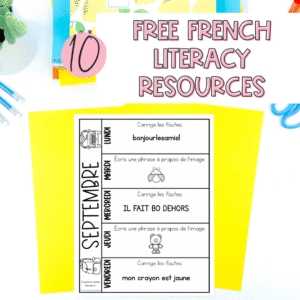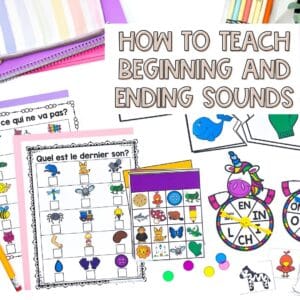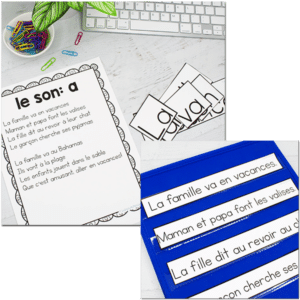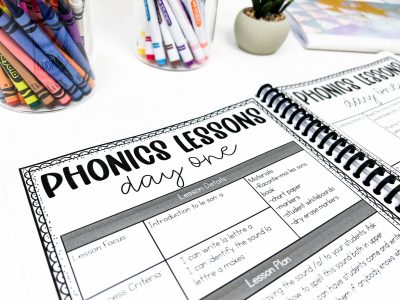When you are busy preparing for and assessing your French students, creating an organized system of where to store your data and assessments may be the last thing on your mind. However, by setting up a system for storing assessments and data, you will save yourself lots of time (and sanity) in the long run. That’s why you need an assessment binder.
In this blog, I am going to give you four tips for organizing your French students’ data, so you can easily document your students’ progress and keep track of important documents.
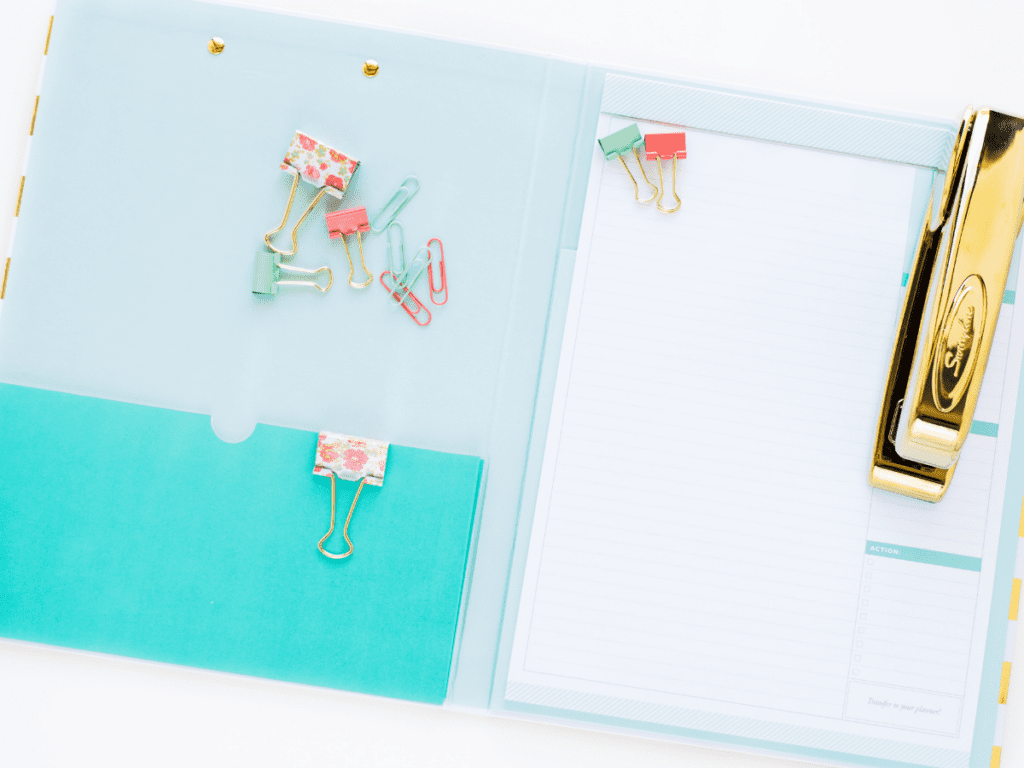
Tip #1: Create a Data Tracking System
One of the best tips for staying organized during assessments is to have a system for tracking data. Personally, I like to use anecdotal notes and check-lists. On the checklist, you may include items such as the student’s current grade or mark, parent contact, and tutoring offered. This is also a great way to track accommodations offered to students during class or on an assessment.
Anecdotal notes are also important trackers of information. The anecdotal notes are for you to note specific things about each student. These might be strengths and next steps you have for students. These notes come in handy when parent / teacher conferences and report card notes are coming around.
You can have a separate check-list and anecdotal note page for each student, or a sheet you use for an entire class or group of students. Make sure you store this information in your assessment binder, so you can keep this data organized.
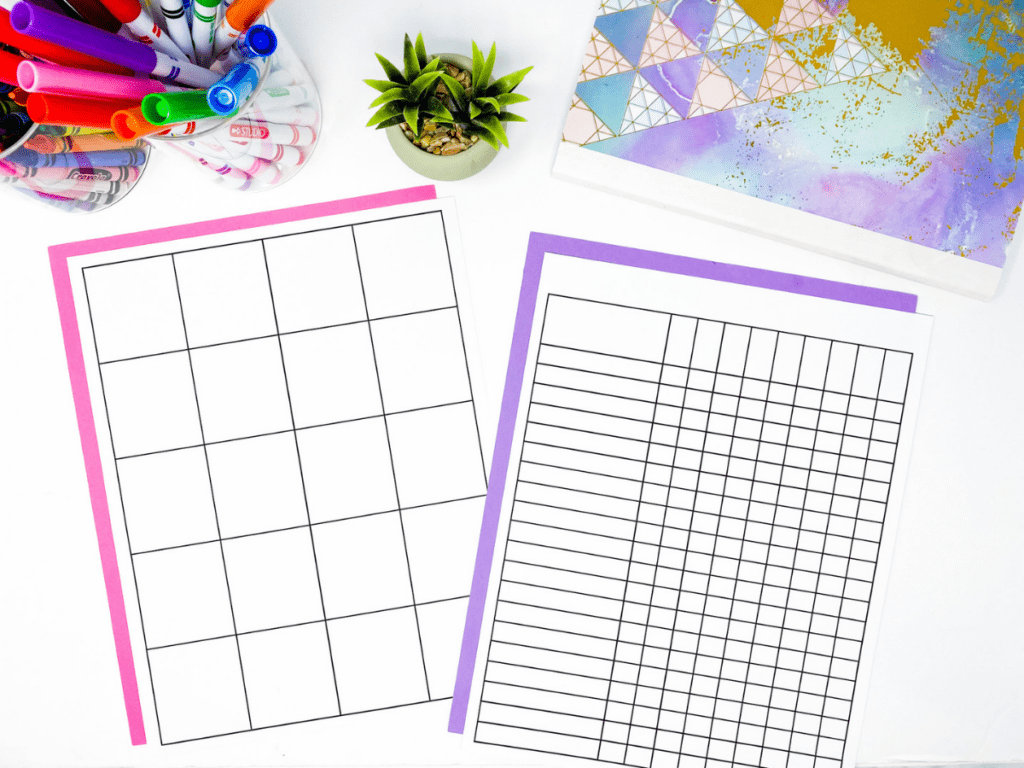
Tip #2: Organize a Binder
You will want a dedicated place to store your French students’ assessment data. I recommend using a binder with divider pages in it. You can divide your binder in several ways, but I recommend one of the following:
- Divide your assessment binder into sections based on subject.
- Divide the binder by student, so every student has their own section.
By keeping your observations, checklists, anecdotal notes, and other assessment data in an assessment binder, it makes it easy to gather it when needed. For example, if you need documentation for a student in special education, you can quickly find everything you need.
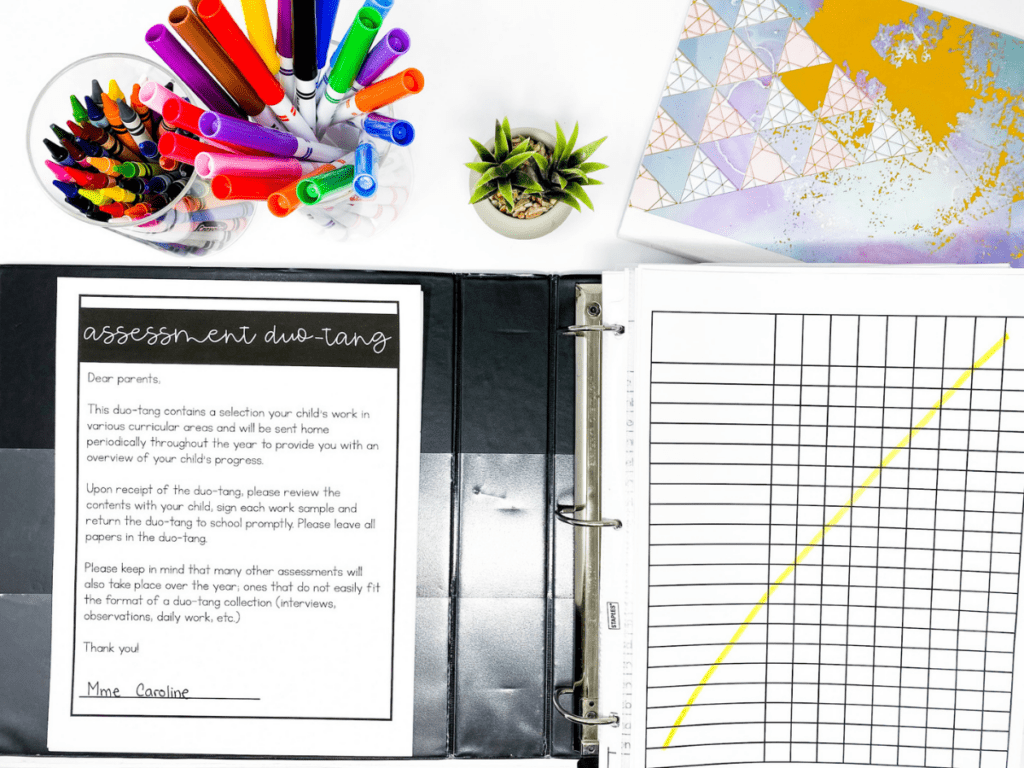
Tip #3: Create a section for GB+
You want to make sure you have a separate section for GB+. GB+ is an important assessment that you want to be able to find easily, so keeping it with other documentation can make it harder to find.
Within that section, organize all of the assessment sheets alphabetically by the child’s name. Keep the child’s most recent evaluation at the top, and all others beneath that. I use small binder clips to clip all pages for each student together. This makes it quick and easy to flip through them.
Want to know more about how I track GB+? Check out this post all about the 3 ways I gather student data.
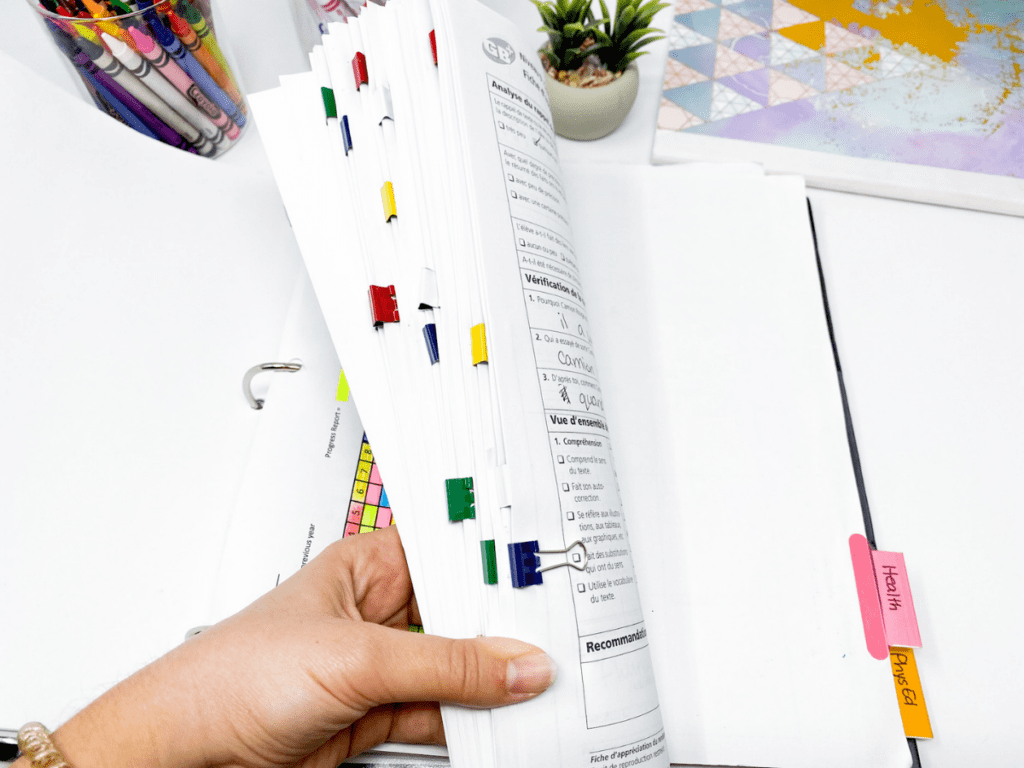
Tip #4: Create a Take-Home Folder
While this tip isn’t directly related to your assessment binder, it will eventually find its way back to your binder! You will want to create an assessment duo-tang for each child. The expectation is that the assessments (work and rubric) will go home to an adult, they will review and sign it, and send the duo-tang back.
This is a key component of your documentation (as a part of your check-list). By sending assessments home on a regular basis, parents can stay informed on a child’s progress. Make sure to keep these signed documents inside your assessment binder.
Want a free parent note to send home in the assessment duo-tang? Grab the freebie below! Help keep parents informed and yourself organized.


